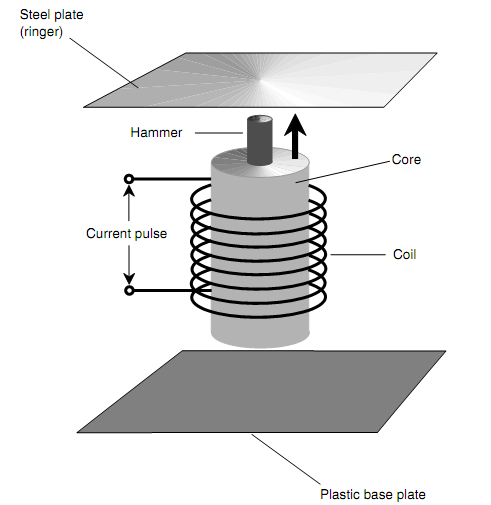Ringer Device:
Figure shown below is a simplified diagram of a bell ringer. Its solenoid is the electromagnet. The core has a hollow area in the center, along its axis, via which a steel rod passes. The coil has many turns of wire; therefore the electromagnet is powerful when a substantial current passes via the coil.

Figure: A bell ringer using a solenoid.
Whenever there is no current flowing in the coil, then the rod is held down by the force of gravity. Whenever a pulse of current passes via the coil, then the rod is pulled by force upward. The magnetic force "wants" the ends of the rod that is in similar length as the core, to be united with the ends of the core. Though, the pulse is short, and the upward momentum is such that the rod passes all the way through the strikes and core of the ringer plate. Then the steel rod fall back down again to its resting place, permitting the plate to reverberate. Several office telephones are equipped with ringers which generate this noise instead of conventional beeping, ringing, buzzing, or chirping emitted by most of the phone sets. The "gong" sound is less frustrating to some people than other attention-demanding signals.